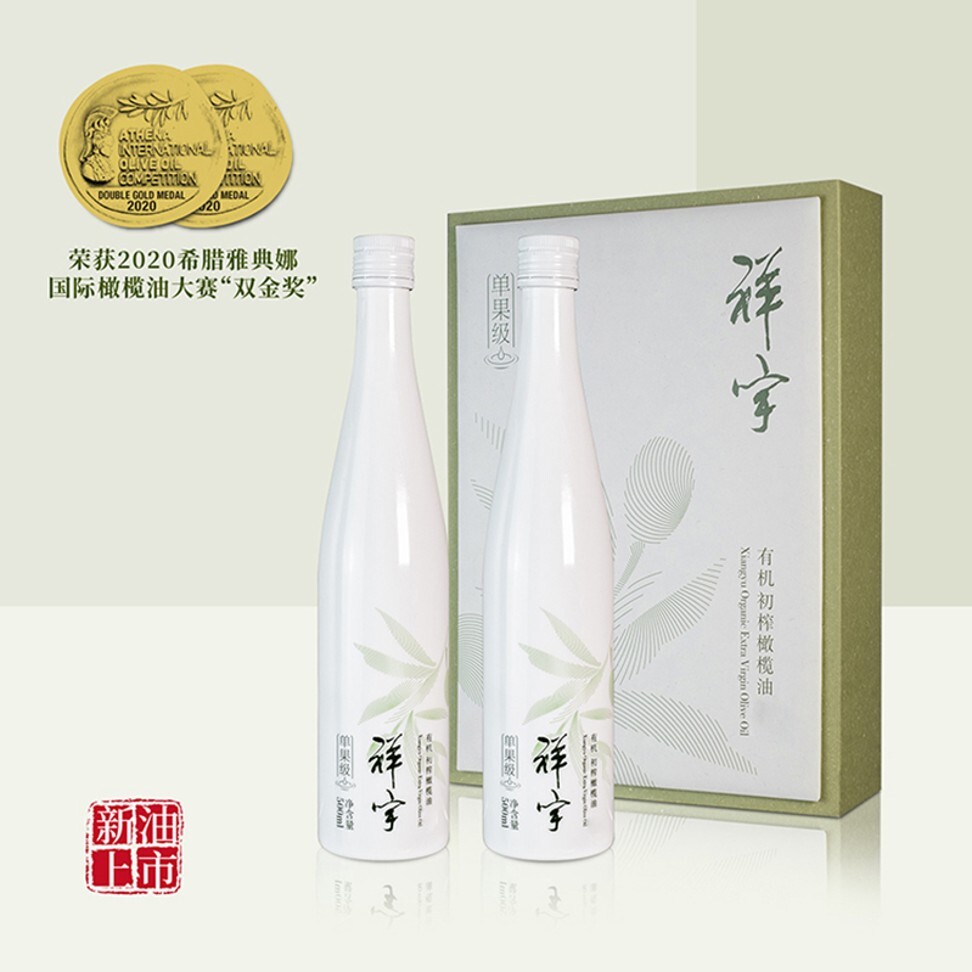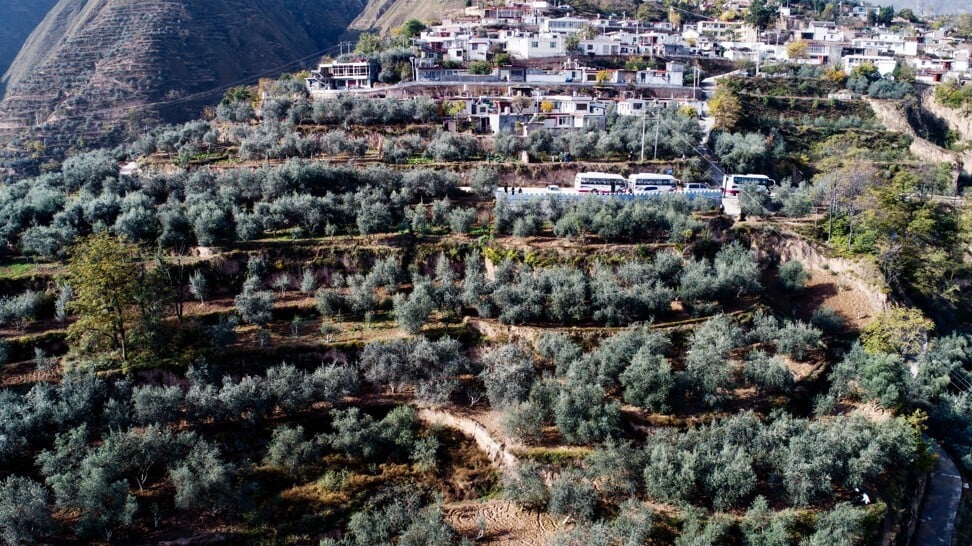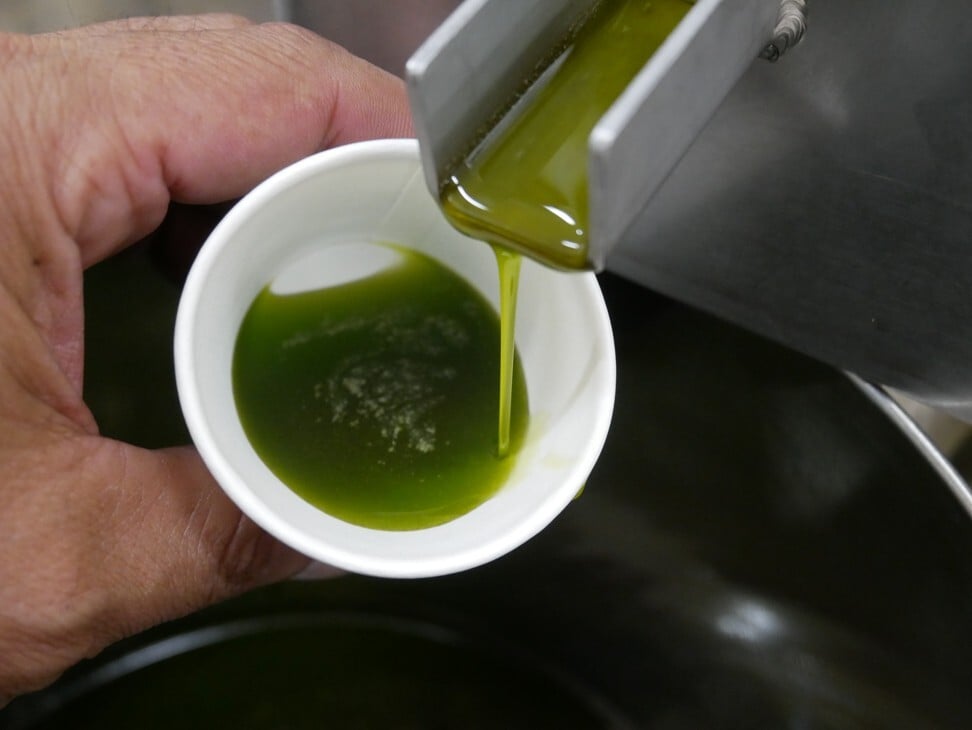
The Chinese and Japanese extra-virgin olive oil producers beating Italians and Spanish at their own game
- Production of top-quality olive oil in western China has risen rapidly, with some oils winning international awards, and it finds a ready market at home
- In Japan, where the first olive trees were planted a century ago, there are more small-scale producers than in China, and a network of olive oil sommeliers
Top-quality extra-virgin olive oil (EVOO) evokes images of sunny Mediterranean countries such as Spain, Greece and Italy – places where olive trees have been grown for millennia for their precious essence.
However, thanks to a number of Chinese and Japanese producers who are making olive oil whose quality is on par with or better than that of their Italian and Spanish counterparts, t his picture is changing .
EVOO does not tend to rank highly in Asian diets, where soy sauce and sesame oil rule on the table, but – thanks to a growing awareness of healthy eating styles and the popularity of the Western-style diet – its popularity is increasing rapidly in China and Japan.
According to Zhang Zhengwu, deputy director at the Longnan Economic Forestry Research Institute in Gansu province, northwest China, the production of Chinese olive oil, though of a high quality, is small, accounting for only about 8 per cent of China’s consumption and 0.2 per cent of international olive oil production.

China has discovered that it is capable of making a high-quality olive oil product. “The industry’s development speed is very fast,” says Zhang. Over 500 firms are making 5,000-6,000 tonnes of Chinese olive oil annually – mostly in Gansu, with some in Sichuan and Yunnan in the country’s southwest.

The Chinese love affair with olive oil began in the 1960s with a campaign by then-premier Zhou Enlai to plant olive trees, says Pablo Canamasas, an agronomist who started helping Chinese producers make award-winning EVOOs in 2015.
“In China, olive oil remained in the [shadows] for some 30 years, then new plantations were set up and huge investments made in technology and processing plants,” says Canamasas.
Over the years, the imported trees adapted to the local climate and terrain and the olives they produce are now recognised as varieties in their own right. According to Zhang, these varieties include chenggu, ezhi, karene and zhongshan.
The Chinese are becoming so good at making EVOO that they are beating out Mediterranean producers. Last year, an oil produced from coratina olives by the Xiangyu Olive Development Co in Longnan’s Wudu district won a double gold medal at the Athena International Olive Oil Competition. The same company won a silver award at the 2019 NYIOOC World Olive Oil Competition. Xiangyu has, since its establishment in 1997, won 44 awards in global competitions.


So what makes this Chinese oil so special?
Its strong, slightly salty taste makes it an ideal cold salad dressing or accompaniment to hot stir-fried foods, and it can also be used as a natural skin cream, for hair care and massages. The oil is currently sold in mainland China, and through agents in Taiwan and Hong Kong. The company is negotiating agreements with countries in Europe and the Americas to ship it overseas, says Feng.

The product is the result not only of heavy investment in research and technology but also of a social, inclusive approach to the olive business. Xiangyu’s oil has helped lift families out of poverty by creating jobs for thousands of farmers who live off the mountainous olive groves.
The 73-hectare (181-acre) Xiangyu Olive Ecological Industrial Park was launched in 2014 to improve the quality of the olive oil produced in Longnan and to accelerate the industry’s development. The company also introduced three imported cold-pressing production lines (which can process 560 tonnes of fresh olives daily) and built a 10,000 tonne oil storage depot.
“We have produced different varieties and excellent quality pure olive oils as well, to give consumers a wider choice,” says Feng. Canamasas says he was left spellbound when he saw the progress in the district – but China is not the only place in Asia to embrace the making of extra-virgin olive oil at home.

According to the International Olive Oil Council, Japan is the third-largest global importer of EVOO and produces about 48,000 tonnes of olive oil per year. The country has more small-scale producers than China, a lobby of expert olive oil sommeliers and hosts an annual global EVOO competition.
“Due to the different weather, Japanese oil is slightly different from the Chinese one – less palatable and pungent, lighter, more watered down. China makes a continental structured oil with more character and greater sensorial quality,” says Canamasas.
Japanese producers have, though, shown that they can make top quality EVOO, winning eight awards at the 2020 NYIOOC World Olive Oil Competition. One silver medal went to Takao Nouen Olive Hatake, an EVOO produced by Toyohiro Takao on Shodoshima, which is known for the olive plantations that dot its coastline.


As in China, Japan’s olive trees are not indigenous – they come from the Mediterranean – and Takao grows Italian and Greek varieties such as lucca, frantoio and kalamata.
“My task is to extract the flavour of each variety to [achieve] the maximum possible taste. I strive to bring out the characteristics of the olive fruit. For example, the lucca variety has a slight green tinge, a hint of blue banana. For the frantoio variety, I envision an olive oil that is like a tropical juice.”
His olive oil meets the international standards set by the International Olive Council in Spain. “In Japan, there is no quality label for extra-virgin olive oil, nor can it be inspected, so we send it to Italy for inspection every year. It is probably the only internationally certified olive oil in Japan,” Takao says.

Takao, who produces up to 10,000 bottles a year but plans to double that, is proud of his oil. “The taste of the oil has been highly praised by chefs and oil stores in Japan, chefs and olive oil tasters in France and food experts in London,” he says. It is used in kappo, or multi-course, Japanese cuisine and soba noodle restaurants as it pairs well with soy sauce and miso, he says.
Although most of Takao’s sales are in Japan, he also ships to France, Britain, Germany, the United States and the Caribbean.
Kai Kato, of Green Basket Japan, is another small producer, with a plantation near Tokyo, who has won several global awards for EVOO. He adopts an artisan approach to making his olive oil, which has a slightly sweetish flavour.

“I put value in doing all the process – from planting, pruning, caring, harvesting to milling and bottling – with the greatest care. Since everything is done by me, efficiency can be lost in some parts, but it is one of the advantages of small producers like myself to take care of each tree and each process diligently,” says Kato.
He started his 3-hectare olive farm 10 years ago, and production is limited. For now, he isn’t exporting.
Kato, who grew up in his family’s Italian restaurant in Odawara, savours olive oil like an Italian purist would: drizzled on a slice of grilled bread, bruschetta style.

